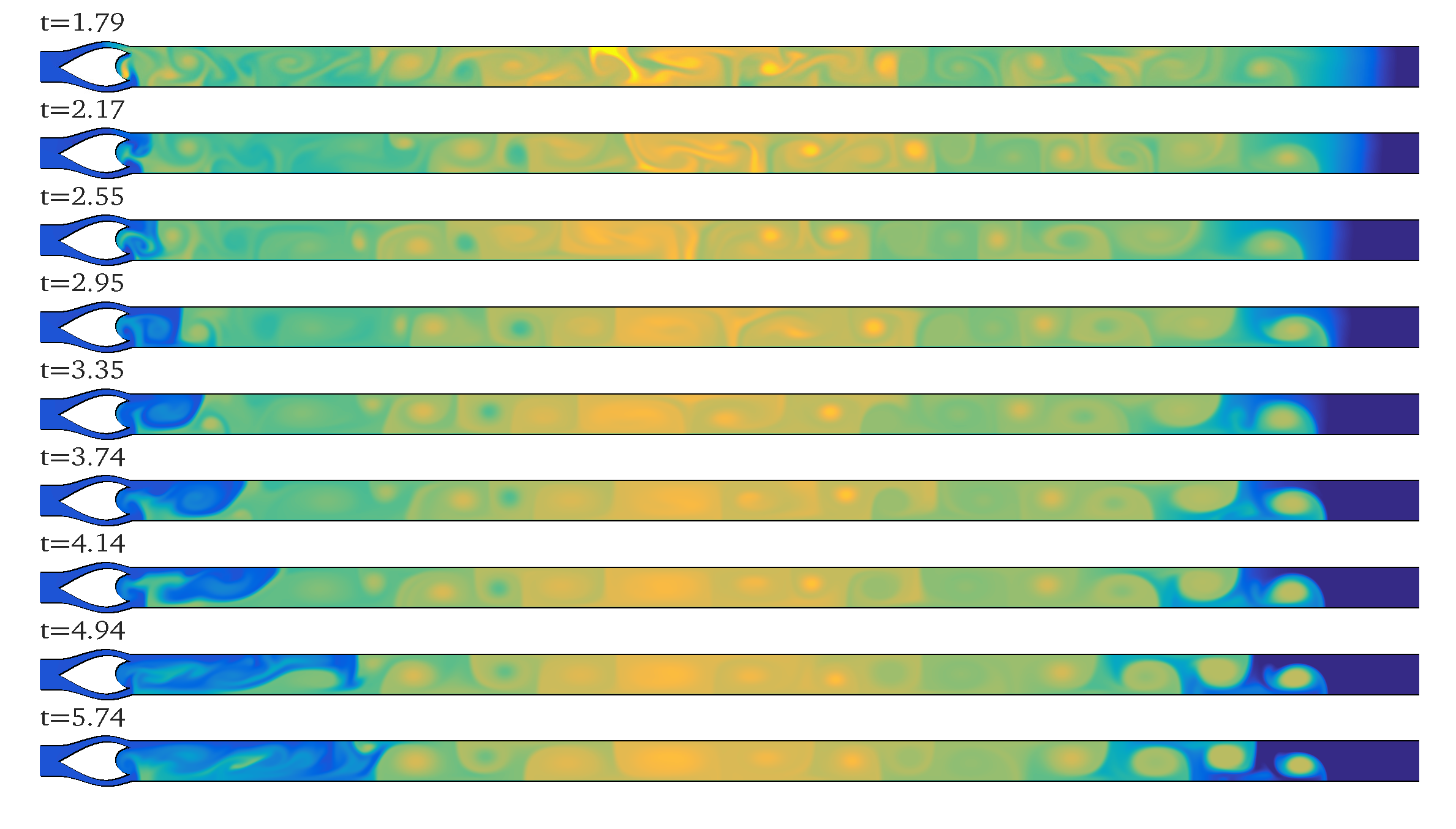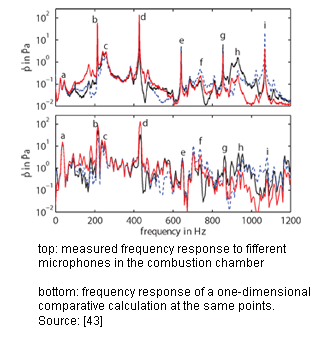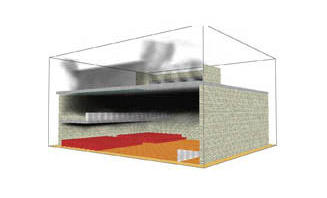Gas dynamics of combustion
The second far-ranging scope of work relates to the dynamics of combustion processes. Of particular interest in this context are:
- Numerical methods for the tracking of flamefronts and for the modeling of processes occuring inside a flamefront
[40] Smiljanovski, V. and Moser, V. and Klein, R. (1997) A Capturing/Tracking Hybrid Scheme for Deflagration Discontinuities. Combustion Theory and Modelling, 1 (2). 183-215 .
[41] Schmidt, H. and Klein, R. (2003) A generalized level-set/in-cell-reconstruction method for accelerating turbulent premixed flames. Combustion Theory and Modelling, 7 (2). 243-267(25).
[42] Schmidt, H. and Oevermann, M. and Münch, M. and Klein, R. (2006) Flame front capturing/tracking schemes for compressible and incompressible reactive flow. TU Delft, The Netherlands , Proceedings of the European Conference on Computational Fluid Dynamics (ECCOMAS CFD). ISBN 90-9020970-0
- Turbulent auto ignitions
 |
The Shockless Explosion Combustion (SEC) is a novel operation mode for gas turbines, in which a Rijke tube is driven by quasi homogeneous auto ignitions. The process achieves quasi isochoric combustion with shockless pulsation without the losses associated with deflagration to detonation transition. We perform several theoretical and numerical investigations and develop the necessary mathematical tools. |
- Thermoacoustic resonances of burner systems
|
Modern low-emission stationary gasturbines as they are used, e.g., in airplanes and industrial complexes, incline to fluctuating heat release and hence to a strong generation of noice. If the generated sound interacts with resonant acoustic modes of the combustion chamber the so generated sound with the fuel chamber in resonance, it can come to the resonance katastanza what entails huge material charges. Around this effect as for example Helmholtz-Resonatoren, are often used in practice. |
 |
[43] Moeck, J. and Oevermann, M. and Klein, R. and Paschereit, O. C. and Schmidt, H. (2009) A two-way coupling for modeling thermoacoustic instabilities in a flat flame Rijke tube. Proceedings of the Combustion Institute Volume, 32 (1). pp. 1199-1207.
[44] Moeck, J. and Oevermann, M. and Paschereit, O. C. and Klein, R. and Schmidt, H. (2008) Experimental and Numerical investigation of thermoacoustical instabilities in a flat flame burner. In: 32nd International Symposium on Combustion, August 3-8, 2008, Montreal, Canada. (Submitted)
- Adoption of numerical analyses in fire prevention
 |
Only experts are generally aware of the dangers of smoke developing inside of buildings in case of room fires. Even relatively small fires can produce large amounts of very toxic fire smoke. Hence, uncontrolled smoke dispersion in buildings very quickly leads to dangerous situations. The majority of fire-induced casualties arises because of flue gas poisoning. We suffocate before we burn. |
[45] Münch, M. and Klein, R. (2007) Critical numerical aspects for field model applications. In: EUSAS conference on Fire Safety Engineering and Smoke Control in Buildings, January 22-23,2007, Vienna.
[46] Münch, M. and Klein, R. (2008) Anforderungen an numerische Berechnungen der Brand- und Rauchausbreitung im Vorbeugenden Brandschutz. vfdb-Zeitschrift Forschung, Technik und Management im Brandschutz, Jg. 57 (3). pp. 145-151. ISSN 0042-1804
[47] Münch, M. and Klein, R. (2008) Critical numerical aspects for field model applications. EUSAS Journal (4). pp. 41-54.
